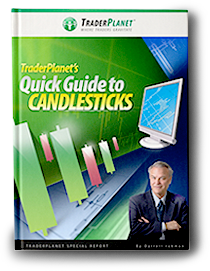The word is out that buy and hold investing is dead. Really? Then someone forgot to tell my grandmother Rosalia, who has been a very successful buy and hold investor since 1972.
She provides a great example of how powerful this long term approach can be, but she didn’t get there by accident. She followed several key investing techniques that you can also employ in your own portfolio. I want to share these secrets with you now so that you can enjoy the same success in the years ahead.
The Background Story
Grandmother Rosalia is now 89 years old. Yet she only started investing in 1972 when her father died and left her and her siblings about a dozen shares each in a well-known oil company you may have heard of… Exxon.
Beyond a few words of wisdom from her father, a small-town banker in downstate Illinois, she had no real investment background. At the age 52, her need to become a sound investor was thrust upon her. Over time she proved to be a natural.
Here are Grandma Rosalia’s 3 secrets to successful buy and hold investing.
Secret #1: Dividends Really Do Add Up
Investors have turned their backs on dividends and dividend-paying stocks since the dot-com boom when growth became fashionable. But even a small dividend, when reinvested and held for years, can turn into big money.
Dividends matter to overall returns. In fact, they accounted for a third of the return of the S&P 500 Index since 1926. That’s not chump change over the long haul. It’s certainly not chump change during bear markets to help weather the storm.
Secret #2: Diversify, Diversify, Diversify
You could say it was just luck that my great-grandfather was an Exxon investor instead of General Motors, or other companies that have not survived. If he had gifted GM shares to my grandmother and she held on for 37 years, she would be left with virtually nothing now.
But she planned for that scenario.
Over the years, my grandmother sold some of her Exxon shares in order to diversify her portfolio. Her plan was to have no more than 5% invested in any one stock. She has stuck with that faithfully over the years and has rebalanced when necessary.
When the downturn in the markets struck in 2008 and 2009, her portfolio declined along with everyone else’s. But good planning kept her losses to a minimum.
Secret #3: Don’t Panic
Sometimes the best thing to do…is nothing at all.
That’s what Rosalia did when the markets were coming unhinged in October/November 2008 and again in March 2009. Buy and hold means what it says. You buy and, well, you hold.
That doesn’t mean she wasn’t nervous. Oh no. There was plenty of handwringing going on. But panic didn’t overtake her investment decision process.
At the same time, that also doesn’t mean you should hold on at all costs. You must know the companies you own, including their strengths and their weaknesses in their market segments. Knowing each company’s intrinsic value helps you to ride out the wild market gyrations.
Buy and Hold in 2010
My grandmother owned her stocks for many years, but that is by no means the only path to buy and hold profits. We here at Zacks have successfully implemented an annual buy and hold strategy. We call it the “Top 10 Stocks” portfolio.
We started this in 2007 and generated a phenomenal +39.4% return. We took our lumps in 2008 just like everyone else. But in 2009 came back with a strong +29.6% gain for investors.
I am part of the team that is selecting the Top 10 Stocks for 2010. I look forward to proving once again that buy and hold investing isn’t dead. You just have to know the secrets.
Learn about Zacks Top 10 Stocks for 2010
Regards,
Tracey
As the Value Stock Strategist for Zacks.com, Tracey Ryniec will provide keen insight into the selection of companies in Zacks Top 10 Stocks for 2010, which has previously posted gains of 29.6% in 2009 and 39.4% in 2007.



